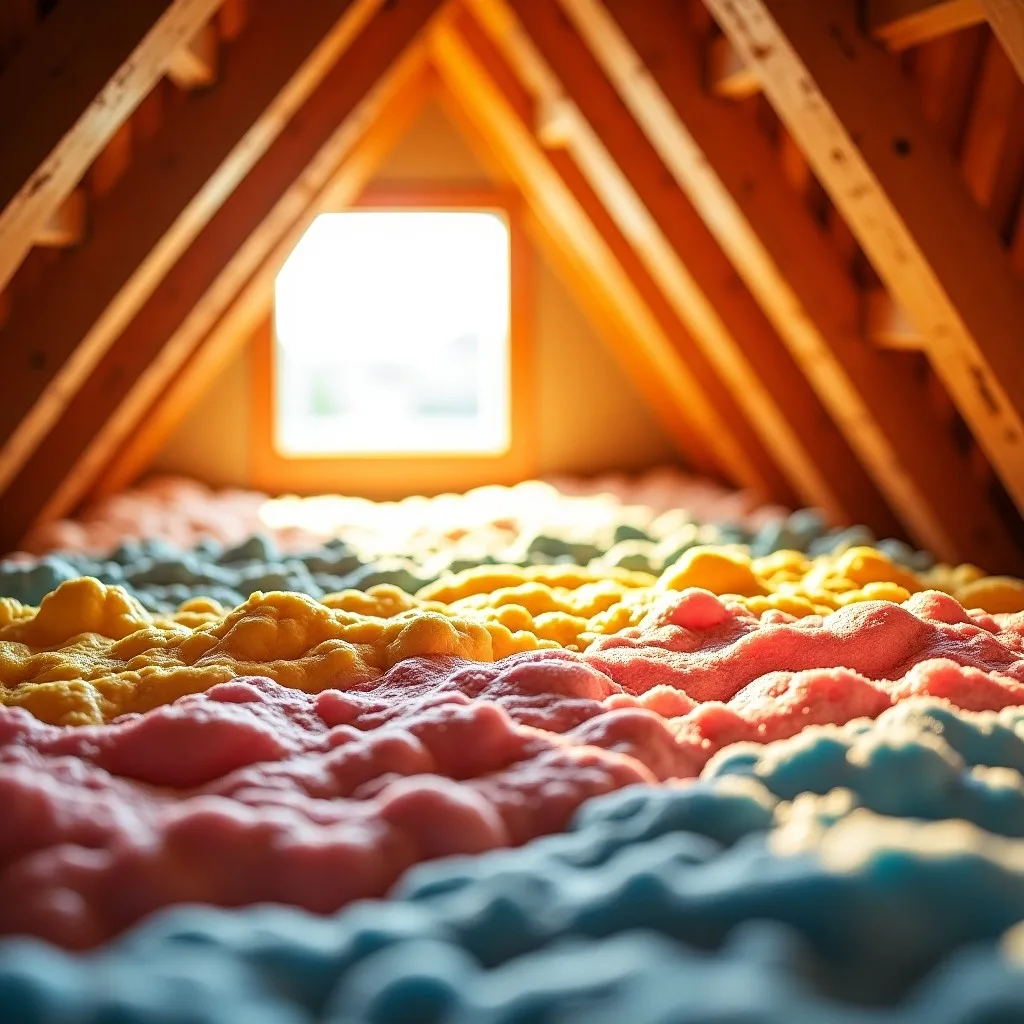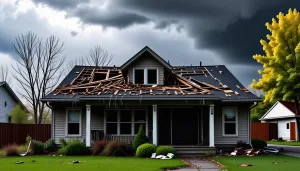When considering the cost of insulating your attic, several factors come into play, each significantly impacting the overall expenditure. Understanding these factors can not only help in budgeting but also in making informed decisions that maximize both energy savings and the efficiency of your investment.
First and foremost, the size of your attic is a primary factor. Larger spaces require more materials, naturally increasing the cost. Additionally, the current state of your attic plays a role—attics that need extensive preparation, such as cleaning out old, degraded insulation or repairing structural damage, will incur additional costs before new insulation can be installed.
The choice of insulation material is another critical determinant of cost. Materials vary widely in price, efficiency, and suitability for different climates and construction types. The main categories of insulation materials are fiberglass, cellulose, foam board, spray foam, and reflective systems. Each offers unique benefits and cost implications, which need careful consideration.
- Fiberglass and cellulose: Generally the most cost-effective, these materials offer good performance at a reasonable price, making them popular choices for many homeowners.
- Spray foam: While more expensive, spray foam provides superior air sealing and insulation capabilities, leading to significant long-term energy savings.
- Foam board: Offers excellent thermal resistance and is easy to install, but can be costlier than traditional batt insulation.
- Reflective or radiant barrier insulation: Particularly effective in hot climates for its ability to reflect radiant heat, though it usually requires supplemental insulating materials.
Geographic location is also a factor that affects insulation costs. Areas with extreme climates often necessitate higher R-values (a measure of thermal resistance), which might increase the cost due to the need for thicker or more advanced insulation materials. Moreover, local labor rates and availability can vary significantly, impacting installation costs.
The complexity of the attic’s design can further influence expenses. Attics with numerous angles, obstructions like vents or ducts, or those with limited access require more labor-intensive work and potentially specialized tools or techniques, which increases labor costs.
Below is a comparison table that outlines how different factors can affect the overall cost of attic insulation:
| Insulation Material | Cost Range (per sq ft) | Efficiency | Potential Energy Savings |
| Fiberglass | $0.50 – $1.00 | Moderate | 10-20% |
| Cellulose | $0.60 – $1.50 | Good | 15-25% |
| Spray Foam | $1.50 – $3.00 | Excellent | 20-35% |
| Foam Board | $0.50 – $2.00 | High | 15-30% |
| Reflective/Radiant Barrier | $0.10 – $0.50 | Variable | 5-10% (with additional materials) |
Attention to these factors not only guides you toward a cost-effective solution but also ensures that your attic insulation is efficient and long-lasting. Properly accounting for these elements is crucial in achieving significant energy savings and ultimately enhancing the comfort and value of your home.
types of insulation materials
When choosing the best insulation material for your attic, understanding the available options is crucial. Each type of insulation comes with its benefits, drawbacks, and specific applications suited for different needs and budgets. Here’s a detailed overview of the most common insulation materials:
1. Fiberglass Insulation:
- Composition and Form: Made from fine strands of glass, fiberglass is typically available in batts or rolls, which makes it easy to install between wall studs or attic joists.
- Benefits: It’s known for being cost-effective with a good balance of price and performance. Fiberglass is resistant to moisture and won’t deteriorate if it gets wet.
- Install Tips: Ensure proper protective gear (i.e., gloves, goggles, and a mask) is used during installation to protect from irritation.
- Cost and Efficiency: Priced around $0.50 to $1.00 per square foot, it has moderate efficiency and can yield energy savings of 10-20%.
2. Cellulose Insulation:
- Composition and Form: Composed mainly of recycled paper products, cellulose is available in loose-fill form, making it ideal for filling in gaps and voids in attic spaces.
- Benefits: Offers excellent resistance to air leakage and has a higher R-value than fiberglass. It’s environmentally friendly due to its recycled content.
- Install Tips: Best installed by a professional using a blowing machine to ensure even distribution and optimal coverage.
- Cost and Efficiency: Costs range from $0.60 to $1.50 per square foot, with good efficiency that can provide energy savings of 15-25%.
3. Spray Foam Insulation:
- Composition and Form: Comes in two varieties: open-cell and closed-cell. Spray foam creates an expansive foam that fills gaps and seals leaks efficiently.
- Benefits: Provides an airtight seal, excellent for reducing energy loss and improving indoor air quality. Great for attics with irregular shapes or hard-to-reach areas.
- Install Tips: Requires professional installation due to specialized equipment and the need for precise application to avoid excessive expansion.
- Cost and Efficiency: Priced higher at $1.50 to $3.00 per square foot, this material promises outstanding efficiency with energy savings of 20-35%.
4. Foam Board Insulation:
- Composition and Form: Rigid panels made from materials such as polystyrene, polyisocyanurate, or polyurethane. Often used where space is limited.
- Benefits: High thermal resistance and prevents air and moisture infiltration effectively.
- Install Tips: Careful cutting to fit around beams and obstacles is necessary, and sealing the edges with tape or caulk enhances performance.
- Cost and Efficiency: In the range of $0.50 to $2.00 per square foot, it boasts a high efficiency, offering potential energy savings of 15-30%.
5. Reflective or Radiant Barrier Insulation:
- Composition and Form: Consists of a reflective material, usually aluminum foil, applied over a substrate like kraft paper, plastic films, or cardboards.
- Benefits: Effective in hot climates as it reflects radiant heat rather than absorbing it, lowering cooling costs significantly.
- Install Tips: Installation involves facing the shiny side towards an open space, and it’s most effective when paired with other insulation types to address thermal, air, and moisture control.
- Cost and Efficiency: With a cost of $0.10 to $0.50 per square foot, the efficiency is variable, offering energy savings of 5-10%, often requiring additional materials for optimal results.
Making a well-informed choice regarding insulation materials for your attic involves balancing your budgetary constraints with the need for efficiency and long-term savings. Each material has its unique set of characteristics and advantages that could make it the right fit for your home.
average cost breakdown
When planning the budget for insulating your attic, it’s crucial to understand the typical cost components involved in the process. This breakdown can help you allocate funds effectively and anticipate potential expenses more accurately.
The first aspect you need to consider is the material cost, which varies depending on the insulation type you choose. Fiberglass insulation, for instance, is one of the most affordable, with prices ranging from $0.50 to $1.00 per square foot. Cellulose insulation falls within a similar range but can go up to $1.50 per square foot due to its denser composition and recycled material content. At the higher end of the spectrum, spray foam insulation costs between $1.50 and $3.00 per square foot, reflecting its superior thermal performance and airtight qualities. Foam board insulation and reflective or radiant barriers, which offer high efficiency and specialized applications, are priced between $0.50 to $2.00 and $0.10 to $0.50 per square foot, respectively.
Aside from materials, labor costs can significantly impact the total expenditure. Installing materials like spray foam or cellulose often requires specialized equipment and expertise, generally priced at a higher rate due to the complexities involved. Labor costs might fluctuate based on your geographic location, the complexity of the attic’s architecture, and the seasonal demand for insulation services in your area.
Additionally, preparation and additional services can add to the overall cost. If your attic requires old insulation removal, structural repairs, or reinforcement before the new material can be applied, these preparatory tasks could increase the budget. Similarly, accessibility issues or intricate designs needing more labor-intensive solutions can drive up costs.
Lastly, it’s essential to remember the potential for government rebates or tax incentives available for energy-efficient improvements. These programs can offset a portion of the installation costs and are typically aimed at promoting energy savings through better insulation.
Understanding these cost elements allows for a more precise and realistic budgeting process, giving you clarity and control over the investment required for insulating your attic. This detailed awareness not only ensures that you stay within financial limits but also enables you to choose an insulation option that offers the best balance of upfront cost and long-term energy savings.
potential energy savings
Upgrading your attic insulation can lead to significant energy savings, transforming your home into a more sustainable and cost-efficient living space. One of the primary benefits of insulating your attic is the reduction in energy bills due to improved thermal efficiency. By minimizing the heat exchange through the attic, a well-insulated space can keep your home warmer in the winter and cooler in the summer. This reduces the need for excessive heating in the colder months or air conditioning in the summer, leading to substantial savings.
The degree of energy savings, however, depends on several factors, including the existing insulation level, the type of insulation installed, and your regional climate. Homes in areas with extreme weather conditions could see more dramatic savings, as the insulation works harder to maintain a consistent indoor temperature.
Studies suggest that effectively insulated attics can cut down heating and cooling costs by about 15% to 20% on average. For instance, using spray foam insulation, which provides excellent air sealing, might result in energy savings up to 35%. Similarly, cellulose and fiberglass insulate by creating a thermal blanket that slows down heat transfer, with potential savings ranging from 10% to 25%.
In addition to reducing energy bills, proper attic insulation enhances the overall comfort of your home by maintaining even temperatures throughout, eliminating drafts, and reducing the workload on your HVAC systems. By optimizing these systems’ efficiency, your home uses less energy and decreases its environmental impact.
Before making decisions, remember to consider the cost of your chosen insulation material against its potential to save on energy bills. Weighing these factors ensures your investment not only suits your budget in the short term but also provides long-lasting energy efficiency and savings over time.
tips for hiring a professional installer
When it comes to hiring a professional attic insulation installer, making an informed choice can significantly influence your project’s success and its cost-effectiveness. A few strategies can help simplify the selection process and ensure you hire the right installer who not only fits within your budget but also delivers high-quality service.
Begin by conducting thorough research. Look for insulation contractors with established reputations and ample experience in attic insulation projects. Checking for online reviews and testimonials from previous clients can provide insights into the reliability and quality of their work. It’s also beneficial to ask for recommendations from friends or family who have had similar insulation work done.
Once you have a list of potential installers, ask for detailed quotes from each. These quotes should itemize the costs, including material and labor, allowing you to compare them accurately. While it’s tempting to go for the lowest bid, consider the value offered, including the quality of materials and workmanship, rather than just the price.
Ensure the contractors are properly licensed and insured. This not only protects you from potential liabilities such as accidental damage or injury during installation but also assures you of their professionalism and compliance with local regulations. It’s helpful to verify this information by asking for their license number and insurance details.
Interview potential installers to gauge their expertise directly. Ask about their experience with the specific type of insulation you are considering, as well as their familiarity with your attic’s structural challenges, like limited access or complex shapes. A competent installer should be able to provide verbal assurances and practical examples of past projects to confirm their competence.
Consider the communication skills of the installer. An effective communicator can walk you through the entire process, explain the benefits of different insulation materials, and keep you updated throughout the project. They should be open to questions and able to provide clear, understandable answers.
Finally, inquire about any warranties or guarantees for the work completed. Reputable professionals often offer warranties on both the materials used and their installation services, providing you with peace of mind should any issues arise post-insulation.
Hiring the right professional installer is critical to ensuring your attic insulation project is done correctly and efficiently. By dedicating time to vet potential installers, comparing quotes thoroughly, and ensuring they meet licensing and insurance requirements, you set the stage for a successful insulation upgrade that maximizes energy savings and maintains your home’s comfort year-round.
In conclusion, insulating your attic is a wise investment that can lead to significant cost savings and increased home comfort. By understanding the factors that affect pricing, familiarizing yourself with various insulation materials, evaluating average costs, and considering potential energy savings, you can make informed decisions that meet your financial and energy efficiency goals. Whether you choose to install the insulation yourself or hire a professional, prioritizing quality materials and proper installation will ensure optimal performance and long-term satisfaction.





